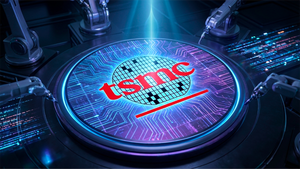
Recently, the market's attention has been overly concentrated on the technology sector, focusing on stocks that deal with artificial intelligence and its growth and global adoption. While today's economy does show a growing trend in artificial intelligence demand, too much concentration on one area could be better, which is why some in the stock market have already started to take profits and look for the next opportunity.
However, the cycle's best opportunities don't just land on investors' laps; they must be dissected and considered thoroughly. One great start is to look into momentum, such as which sectors or asset classes have outperformed lately. Another angle investors can – and will – take today is to consider what the bigger players on Wall Street are starting to buy into and out of.
Today, investors can dig into Stanley Druckenmiller's newest decisions. Druckenmiller traded shoulder to shoulder with George Soros, arguably one of the best macro traders of his time. Suppose anyone can illuminate the new macro rotation. In that case, it is Druckenmiller who not only sold out of NVIDIA Co. (NASDAQ: NVDA) but also bought into the following two exchange-traded funds (ETFs).
Profit Now, Invest Smarter: Cheaper Upside with Reduced Risk
While NVIDIA might be the first stock investors think about when it comes to profit-taking, as the company had a run of over 158% in the past 12 months, there are association effects when this giant starts to go down. Earlier this week, other names like Amazon.com Inc. (NASDAQ: AMZN) also sold off by 3.3% in a single day.
Investors are expanding their concerns beyond semiconductor stocks, causing notable drops in shares of typically robust companies like Apple Inc. (NASDAQ: AAPL) and Alphabet Inc. (NASDAQ: GOOGL), each facing mid-single-digit selloffs in just one day.
The answer everyone is looking for is where these new liquid funds are headed. Starting from the Druckenmiller view, it looks like the macro rotation now favors bonds and small-cap stocks, as this macro investor bought into the iShares Russell 2000 ETF (NYSEARCA: IWM) and the iShares 20+ Year Treasury Bond ETF (NASDAQ: TLT).
Far from blindly following Druckenmiller’s lead, here’s how investors can lock in their understanding of the reasons behind this decision. But first, here’s why they are more attractive today than the popular names in the technology sector.
Momentum in focus, the small-cap ETF has outperformed the broader S&P 500 by nearly 5% over the past three months. On the other hand, the Technology Select Sector SPDR Fund (NYSEARCA: XLK) barely matched the three-month performance in the S&P 500.
However, bonds aren’t known for momentum, so here’s how investors can think about this trade. Bond prices move opposite to interest rates, and with an over 90% probability of rate cuts coming by September 2024, according to the CME’s FedWatch tool, buying a bond ETF looks like an unmissable trade today.
Top Stock to Watch: Beat the Market with This Pick
Retail investors have an advantage over people like Druckenmiller because of their size. While buying into an individual small-cap stock will barely move the needle for institutional investors with billions of dollars at their disposal, a near triple-digit percentage move in a small-cap can be a career-maker for a retail investor.
If you are looking for a cheap upside, here’s one small-cap stock investors can focus on to beat the market in this new rotation.
Hudson Technologies: The Regulatory Play Investors Can't Miss
Even though the upside is almost guaranteed in Hudson Technologies Inc. (NASDAQ: HDSN), it has a $411 million market capitalization, so unless Druckenmiller buys the whole company, it won’t do much for him. However, investors can lean on new refrigerant regulations to ride a wave in this stock.
The American Innovation & Manufacturing (AIM) Act seeks to reduce greenhouse gasses caused by coolants in refrigerators and air conditioning systems. In a process known as reclamation, Hudson Technologies helps make these used coolants as pure as possible to reduce emissions and comply with the act.
According to the company’s latest investor presentation, Hudson Technologies owns 35% of the market, which will only grow from here. Otherwise, customers risk getting fined on the premise of the AIM Act. Here’s how Wall Street feels about this small-cap stock.
Analysts forecast up to 29.7% earnings per share (EPS) growth for the next 12 months. This view drove consensus price targets up to $12.4 a share, or a perceived upside of 37.2% from where the stock trades today.




